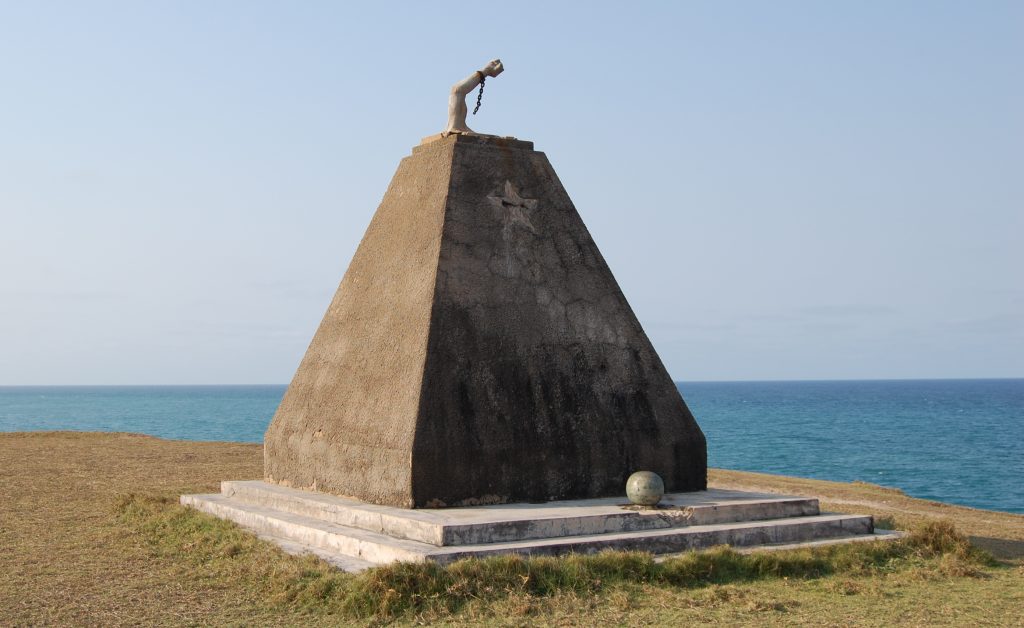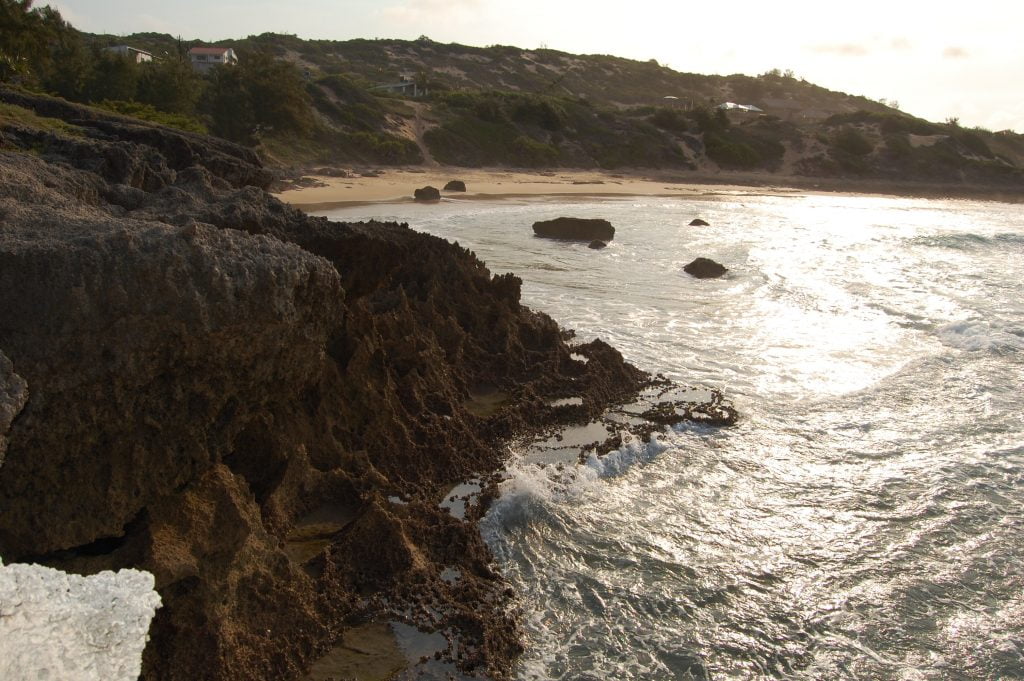The history of Mozambique is based on 500 years of colonial occupation followed by the struggle for independence and a brutal civil war. The enduring effects of colonial occupation are readily apparent in endemic poverty, shambolic infrastructure and the institutional corruption left behind.
For over 500 years, the Portuguese exploited the country’s resources and then left them in shambles. It is the bitter story of so many of Europe’s former African Colonies. However, Mozambique suffered greatly and the colonial legacy is longer lasting.
The Geographic History of Mozambique
Indeed, the division created by the Zambezi River serves as a pertinent metaphor for the colonial scars that still divide Mozambique. The Zambezi River is the fourth largest river in Africa and splits Mozambique into two topographical areas. This creates a natural border dividing the country into the highlands in the north and the lowlands in the south.
Located in SE Africa, Mozambique is the 36th largest country in the world by land mass. South Africa and Swaziland are to the Southwest. Plus, Zimbabwe, Malawi, and Zambia form the Western border of Mozambique. To the North Tanzania and the Mozambique Channel forms the East Coast.
Colonial History of Mozambique
Initially, Vasco Da Gama sailed around the Cape of Good Hope in 1498 and established a colonial foot hold in Southern Mozambique. Indeed, the Europeans were looking for gold and named their point of entry “Ponta do Ouro” which translates as “point of gold”.
Mozambique had no gold to offer the Europeans. However, the Portuguese remained indefinitely to derive profit from the area as a slave trading center.
Consequently, the Portuguese encountered competition from the Arab Muslim slave traders between 1500 and 1700 for control of the slave market. However, the Portuguese eventually regained firm control and maintained their control of the country until independence in 1974.
Colonial Influence on Mozambique Culture
The national language in Mozambique is still Portuguese and their native dialects have become obsolete. This is the indelible mark of a brutal colonial occupation. In contrast, other liberated African colonies maintained their native dialects notwithstanding the influence of the colonial regimes.
Indeed, Zulu is a widely spoken language in South Africa and it was not replaced by English or Afrikaans. The Maasai Tribes in Kenya still speak their native dialects, not the language of their British colonial masters. In contrast, the native language in Mozambique is Portuguese.
Academics claim Mozambique still uses African dialects. But what was the native language of Mozambique before the arrival of the Portuguese? My personal travel experience through Mozambique indicates that it is extinct. I also made local inquiries about the “native language” but they were unable to answer.
Indeed, their colonial masters whitewashed the history of Mozambique resulting in the eradication of their native dialect. The absence of a prominent native dialect and the prevalence of spoken Portuguese remains a very visible colonial scar on the history of Mozambique.
The Battle for Independence
In Sub-Saharan Africa, European control of their colonies became much more volatile during the 1960s and 1970s. This was in large part due to the efforts of the communist Vietnamese in defeating both the industrialized French and also the United States Army (US) during the two Indochina Wars.
The success of the Vietnamese communists against their colonial masters made the oppressed countries in Africa realize that they too could obtain independence from colonial rule. Additionally, colonial Africa was able to successfully replicate the same resistance strategy against the Europeans.
African freedom fighters received equipment and funds from the USSR and successfully achieved independence. After independence, many of the liberation fighters would then become cold war proxies used by the US and former USSR. This would be the case in Mozambique and would eventually result in 20 years of civil war.
Mozambique War of Independence 1964-1974
The Portuguese were not willing to voluntarily leave the country. As a result, in 1964 Mozambique initiated guerilla warfare against the Portuguese with limited success. After 9 years of futile resistance to Portuguese colonial rule, the Mozambique freedom fighters caught a lucky break.
In 1974, there was a political coup in Portugal that destabilized the government. As a result, the anti-colonialists were to gain the upper hand in their struggle for independence.
After five centuries of colonial rule, the resistance movement known as The Front of Liberation of Mozambique (FRELIMO) took control of the country in 1975 and established a one party Marxist rule. Eventually, Mozambique would become a multi party democracy. However, the country would first need to endure a brutal civil war that lasted nearly 2 decades.

The Civil War of Mozambique 1977-1992
After independence, FRELIMO began to crack down on the anti-communist opposition in an effort to consolidate power. Unfortunately FRELIMO was unable to decisively gain control of the country. As a result, a long war began between FRELIMO and their US backed anti-communist enemies.
The anti-communist Mozambican National Resistance (RENAMO) was able to exercise control of the countryside while FRELIMO could only control the population centers. Additionally, the Apartheid regime in South Africa and the white rule state of Rhodesia (Zimbabwe) allied with the anti-communist RENAMO forces. This exacerbated and prolonged the civil war which would result in the deaths of over 1 million Mozambicans.
Crimes against humanity were widespread and the war also caused famine throughout the country. This included the execution of tens of thousands of the opposition by FRELIMO. Additionally, the civil war destroyed Mozambique’s infrastructure and resources. The damage remains to this day.

Burraco dos Assassinatos “The Hole That Killed People”
Burraco dos Assassinatos is a notorious execution center located on an innocent looking seaside bluff near Tofinho, Mozambique. Its name translates into English as “the hole that killed people”.
The five meter deep blow hole is a naturally occurring formation found among jagged limestone cliffs. Inside the hole, the walls are covered with sharp limestone spindles. The method of execution was to throw the victims alive down into the hole.
As a result, the jagged limestone spindles would tear into their flesh and break their bones. In excruciating pain, they would lie at the bottom of the hole waiting for the tide to wash them out to sea into the mouths of the waiting sharks.

Initially used by the Portuguese colonial authorities, it was here where they would throw those who would refuse to pay the colonial tax. Subsequently, FRELIMO would follow in the footsteps of their former colonial masters and execute RENAMO opposition members at Burraco dos Assassinatos.

Is the History of Mozambique Repeating itself?
After the struggle for independence and the brutal civil war Mozambique still remains as one of the poorest countries in the world. Additionally, Mozambique still suffers from institutional corruption. As a result, Transparency International ranks Mozambique number 116 out of 178 on its global corruption index.
Despite the low Transparency International corruption rankings, in 2007 IMF and the World Bank praised Mozambique as a “Sub-Saharan Africa success story”. Unfortunately, it was to only be a false dawn.
More recently the IMF halted funding after the Mozambique government revealed nearly 1 billion USD in undisclosed debt. Additionally, the “Tuna Boat Scandal” implicates the Mozambique government in fraud for misappropriation of tuna boat funds.
The tuna boat scandal evolved after the Mozambique government issued 850 million in foreign debt to fund a tuna fishing company named “Ematum”. However, the government then misappropriated 500 million of the funds and used it to construct naval vessels. Apparently, naval vessels were needed to “protect the tuna fleet”. This is a lame excuse because Mozambique has no contemporary maritime threats.

